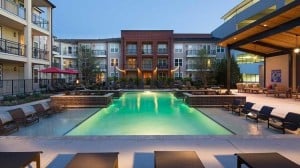How Independent Apartment Owners Can Increase Income

From small improvement tips to large-scale unit remodels to best practices for protecting your assets from insurance claims, the Independent Rental Owners sessions provided key insights for apartment entrepreneurs from experienced industry professionals.
REDUCING ENERGY CONSUMPTION
Many independently owned units fall into the all-bills-paid category, which differs from large institutional owners who tend to pass off utility responsibility to their renters. Since the landlord is responsible for paying the utilities in an all-bills-paid unit, a quick and easy money saving technique is to manage utility output. Utility benchmarking is a helpful practice, as you can develop a standard for utility usage and then monitor your building’s performance over time. Using a benchmarking system can allow you to target specific utilities and optimize consumption practices. Installing LED light bulbs and updating appliances to meet energy efficient standards are also common practices among independent owners, as well as updating sprinkler systems with smart sensors and timers that track weather patterns and adjust watering accordingly to help cut back on excess water use.
CHARGE FOR ITEMS YOU DON’T NORMALLY INCLUDE
Depending on geography, some household amenities are expected as part of the lease, while others are not. If refrigerators or washers and dryers are not expected in your units, consider adding them and increasing the rent. According to Karla Ross of Bob Ross Realty, simply adding a refrigerator to a unit can increase monthly rent by upwards of $50 in certain locations. A high-quality, refurbished refrigerator that costs $550-600 with a three- to five-year lifespan can be paid back in roughly one year. The excess cash flow goes straight into your pocket.
Taking the amenity package a step further, Ross recommends analyzing the effects of fully furnishing your units and renting them out as corporate or short-term rentals. Furnished apartments can sometimes go for double the asking rent of an unfurnished apartment. While volatility in occupancy may increase with short-term or corporate rentals, the additional cash flow can often offset or exceed the cost to maintain the unit.
ARE YOUR AMENITIES STILL IN HIGH DEMAND?
Many independent owners maintain portfolios of older stock, and while it’s common to update the interior of buildings and units, often the exterior is overlooked. Does your property have a courtyard or basketball court that are rarely used? Would adding a walkway or changing the color of a fence improve the use of outdoor space? Victoria Cowart of Darby Development Co. recognizes significant value in reconfiguring unused space into more attractive shared areas like dog parks or outdoor entertainment areas with grills and fire pits. As resident desires change, modifying and improving your communal space can improve your curb appeal significantly.
ENHANCE COMMUNICATION WITH TECHNOLOGY
Online portals and mobile apps are no longer unique to large owners with significant technology budgets. As Tim Hurley of Highland Commercial Properties explained, it is now simple to create mobile apps using public platforms such as Google Forms. Apps can allow owners to communicate with residents to handle customer service requests and inspections, or contact vendors and service providers to maintain contracts. As technology becomes paramount in the industry, independent owners can stay current with simple and basic mobile app communication.
MAKE SURE YOUR CONTRACTORS AND VENDORS CARRY THE APPROPRIATE INSURANCE COVERAGE
Having the right insurance in today’s market goes beyond carrying the right policy on your property. It is important to ensure that anyone coming onto your property, whether it is a resident, vendor or service provider, maintains their own insurance to limit your liability. Lonnie Derden of Enterprise Risk Control explained that service workers who are injured while working at your property can file a worker’s compensation claim against you if their companies don’t maintain adequate coverage. This can lead to rising premiums for property insurance and can be easily avoided if you verify proof of insurance when signing contracts with your vendors.
Renter’s insurance is also a key way to avoid paying insurance claims if something were to happen on your property. Some owners are even providing renter’s insurance to all residents, and including the cost in the rent. Property claims can get very expensive and affect your ability to maintain insurance going forward. If the claim is minimally more expensive than your deductible, it may be wise to pay for the repairs out of pocket, rather than filing a claim, which will impact your insurance rates for the long-run. A quick check of proof of insurance for renters and vendors is an easy way to insure you don’t end up paying avoidable insurance claims.
While independent owners often do not have the capital available to institutional owners, they remain competitive by taking advantage of small improvement projects, providing amenities residents use and desire, and ensuring all people entering their properties are adequately covered for liability purposes.
Source: multihousingnews.com















 Accessibility
Accessibility